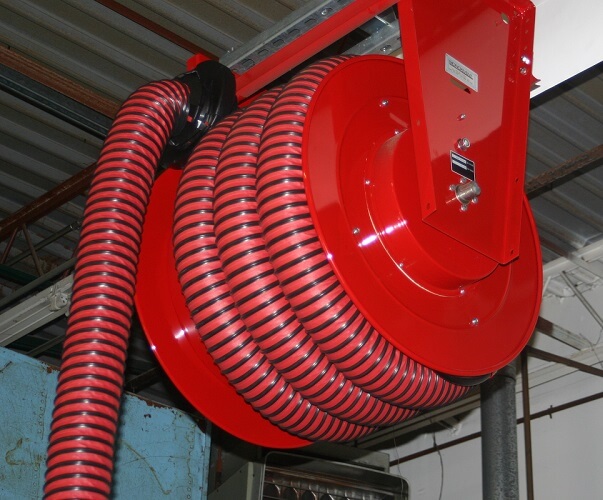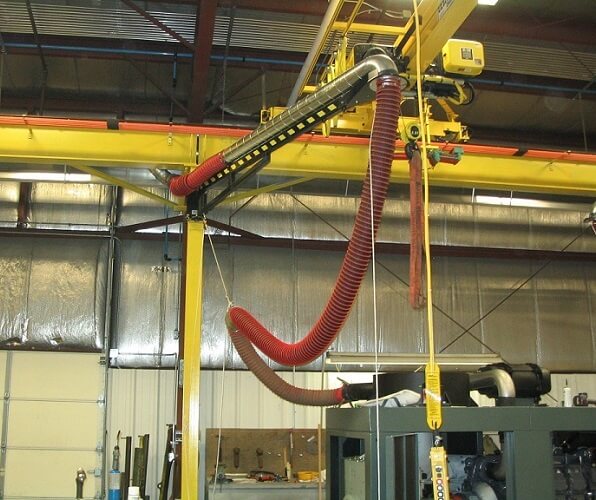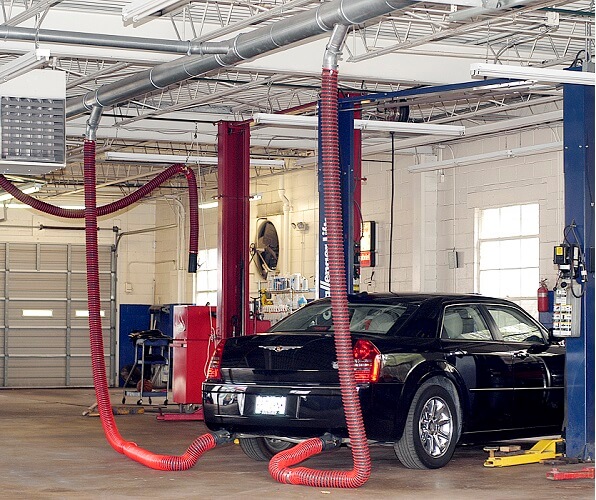Vehicle Exhaust Extraction System Types: Comparison Guide
Selecting the right type of vehicle exhaust extraction system is a critical decision that directly impacts workplace safety, operational efficiency, and long-term facility costs.
With vehicle exhaust temperatures ranging from 300°F to over 1,000°F during normal operation, and reaching even higher temperatures during regeneration cycles, proper system selection is essential for both safety compliance and equipment longevity.
Each type of exhaust extraction system offers unique advantages for specific applications. From basic rope and pulley systems suitable for small repair shops to motorized hose reels designed for high-volume commercial facilities, the choice depends on numerous factors including:
• Facility layout and space constraints
• Types of vehicles serviced (from passenger cars to heavy-duty trucks)
• Operating temperatures and exposure duration
• Frequency of use and accessibility requirements
• Budget considerations for both initial investment and ongoing maintenance
• Future expansion plans and scalability needs
• Local code requirements and safety regulations
This guide analyzes each system type in detail, helping facility managers and business owners make informed decisions based on their specific operational requirements and constraints.
Overhead Drop Systems
Technical Specifications
Hose diameter options: 4"-12" (varies by temperature rating)
Temperature ratings: 400°F to 1500°F available
Typical coverage radius: 15-20 feet from mounting point
Standard mounting height: 12-16 feet (adjustable based on facility needs)
Available hose lengths: 15' to 30' standard (custom lengths available)
Support systems: Rope and pulley or spring balancer options
|
Benefits • Most affordable install among permanent solutions |
Best Applications • General automotive repair shops |
Hose Reel Systems
 Technical Specifications
Technical Specifications
Hose diameter range: 4" to 12"
Temperature ratings: 400°F and 600°F standard
Motor options: Spring-operated or powered with remote control
Maximum extension: Up to 80' for specialty
Mounting options: Ceiling, wall, or floor mount
Control systems: Manual, switch
Retraction mechanisms: Spring or motorized
|
Benefits • Organized hose storage when not in use
|
Best Applications Light Duty: Spring Operated: Motorized: Specialty/Oversized: |
Boom Arm Systems
 Technical Specifications
Technical Specifications
Pivoting Arms:
Standard reach options: 7', 10', 13'
Swing radius: 180° standard
Mounting height: 8'-16' recommended
Temperature rating: Up to 600°F
Diameter: 6" standard
Support options: Wall or column mount
Articulating Arms:
Extended reach options: 10', 15', 20'
Swing radius: 270° typical
Mounting height: 8'-16' recommended
Temperature rating: Up to 600°F
Diameter: 6" standard
Support options: Wall or column mount
Joint configuration: Dual articulation points
|
Benefits • Excellent solution for overhead crane environments |
Limitations • Fixed mounting location |
|
Best Applications Pivoting Arms: |
Articulating Arms: • Complex service areas • Multiple vehicle positions • Varied equipment configurations • Extended reach requirements • Applications requiring precise positioning |
Making the Right Choice
The selection of an appropriate vehicle exhaust extraction system requires careful consideration of multiple factors:
|
1. Facility Assessment • Building dimensions and layout |
2. Operational Requirements • Usage frequency |
|
3. Budget Considerations • Initial investment capability |
4. Safety and Compliance • Local regulations |
Beyond system selection, proper implementation and maintenance are crucial for long-term success. Regular inspections of hoses, connections, and support mechanisms help prevent system failures and ensure consistent performance. Training staff on proper usage and handling procedures maximizes system longevity while maintaining workplace safety standards.
As vehicle technology continues to evolve, exhaust extraction systems must adapt to handle varying temperature ranges and emission types. Investing in a system that can accommodate future needs while meeting current requirements helps facilities stay ahead of regulatory changes and technological advances.
Ultimately, the right exhaust extraction system does more than meet compliance requirements—it creates a healthier workplace, improves operational efficiency, and protects valuable equipment investments. When properly specified and maintained, these systems become an essential component of any professional automotive facility's infrastructure, delivering returns through improved air quality, worker productivity, and equipment longevity.
You may also like:
• Vehicle Exhaust Extraction Systems for Commercial Facilities
• Common Misconceptions About Vehicle Exhaust Extraction
• Diesel Exhaust Removal Systems: Safety Solutions for Workspaces



